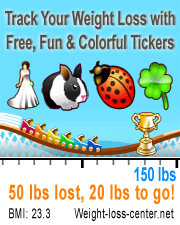When seeing that 95% of all dieters regain the weight they have lost, a dieter can become discouraged before they even begin. One of the things that seem to stand in the way of diet success is the management of hunger. Many people have troubles managing their hunger when they make the decision to lose weight. Often, this hunger is not merely an emotional response to stress or to the idea of a diet, but also a physical response that is triggered by an unbalanced diet, which causes the dieter to have cravings that can not be easily controlled.

Try these diet tips that will help you to curb you hunger pangs and make losing weight a little easier.
The idea of a hunger free diet is something many dieters dream of, myself included. Although this concept may seem far fetched, there are a number of diet techniques that can be combined in a healthy diet that will work miracles in helping reduce hunger. There may not be a weight loss diet that is 100% hunger free, but here are some excellent techniques to curb your pangs.
Increase Protein, Decrease Sugar
The body likes to burn sugar quickly, as this helps the person have instant energy. But when this fuel is consumed, the body then wants more. This leads to hunger and to very low dips in the blood sugar levels. When this happens, the person will have troubles following their eating plan and making healthy food choices. It’s better to find ways to stabilize the blood sugar that will help to level out hunger. One way to keep blood sugar levels stable is to add protein to every meal. Protein doesn’t break down as quickly, helping the body have a steady supply of fuel. Plus, if the meal does include carbohydrates, the body will not break them down as quickly in the presence of protein, helping to manage hunger before it begins.
Eat More Frequently
If you’re very hungry on a diet, you might want to ask yourself if you are eating enough calories. Many people think restricting their calories severely will help them to lose weight more rapidly. While there is truth in this statement, severe calorie restriction will also lead to a slower metabolism and more hunger pangs. It is helpful to break up your meals into smaller portions and space them out over the day. This way, your blood sugar level stays stable and your body always has fuel to burn. In doing this, your metabolism will stay high, you will lose weight more easily and your hunger will be kept at bay.
Add Water and Fiber for Fullness
Sometimes you just need to add fullness to your stomach to help you with hunger pangs. By drinking more water each day, you will begin to make your stomach feel as though it can not eat anymore. Also, many times what feels like hunger is actually thirst. The water you drink will help to satisfy the cravings and keep you from adding calories to your day. Fiber will also help you feel fuller since it is more difficult for the body to digest. In slowing down the digestion, you will create a sensation of being full, which allows you to say no to a strong craving.
With these diet tips, you can design your own hunger free diet. While you may never completely get rid of the hunger pangs you feel, you will begin to manage them and make them simply bumps on the road to success.
Other Related Posts and Articles you May Find Interesting: “Weight Loss Benefits of Protein”, “Leptin and Weight loss: How the Fat Hormone Affects Hunger and Metabolism”, “Foods that Stabilize Blood Sugar” and “How Fiber Helps Weight Loss”.





High fiber, low sugar and good amount of protein. Protein really is filling but I would limit the fatty red meat intake and would never eat the chicken skin.
Never letting yourself get hungry is the trick to all diets. When you get too hungry, you will just way over eat at your next meal, so you need to keep yourself from doing that by not letting yourself get hungry in the first place. People do eat a lot more than they realize especially when served those large restaurant-style portions. Thus in turn it results in consuming too many extra calories. But, not all large portions are created equal. Larger portions of fiber-rich foods and water, like fruits and veggies and broth-based soups, can fill you up and make you LESS HUNGRY with less calories. Also you should start your meal with an appy. Research shows that if you eat a low cal appetizer before your meal, you will eat fewer calories during the meal itself. So, a good idea is to start your meals with a broth-based soup or a small salad (without a large amount of dressing, cheese or croutons.) Also in regards to fruits and veggies they are generally low cal and will fill you up, but make sure you don’t prepare them by breading and frying, and using creams or butter with vegetables and fruit because it will add extra calories and will just defeat the whole purpose of what you are trying to do. Instead steam your vegetables and use spices and low-fat sauces for flavor. Also do not put extra sugar on your fruits, just enjoy their natural tastes with their natural sugars the way nature intended. 🙂